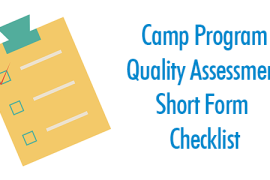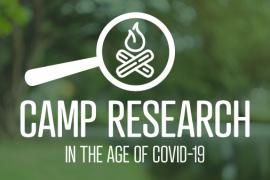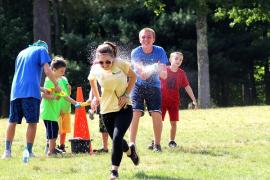Ann Gillard and Robert P. Warner’s Evidence-Informed Guidance for Summer Camp Staff Training is a new resource that provides camp professionals with promising practices for summer camp training, and can help camp administrators make decisions about training their staff. This three-part series outlines that resource, highlighting (1) what we know about summer camp staff training, (2) recommended competencies and how training effectiveness is influenced by characteristics of camp staff, and finally (3) how to structure staff training and how training can transfer to camp work. This is post 2. See post 1.
What competencies should summer staff learn during training?
The point of training should be to build staff members’ competencies to do their jobs. How do camps verify mastery of concepts taught during training, such as with a checklist of completion, competency assessment, skill demonstration, or other assessment? Is the training that was provided relevant to the roles and responsibilities of staff members? Is the training standards-based (i.e., is training provided to meet specific organizational/institutional standards)? If so, why and according to what standard? If not, why not? Consider doing a training needs assessment to determine which staff need to learn which concepts. Consider differentiating your training for new and experienced staff members.
Decide if you want to teach skills/competencies OR build teams – be intentional.
Research implications of studies looking at staff training point to the need for camps to conduct training needs assessments and to decide what competencies are needed for employees’ roles and jobs. Fortunately, there a number of frameworks or competencies designed for youth development professionals like camp staff, which can be used to design and evaluate training content. Some competency frameworks you might consider include:
- American Camp Association: Certificates of Added Qualification
- National Afterschool Association: Core Knowledge and Competencies
- Youth Work Core Competencies
- Or check out additional resources compiled by the American Institutes for Research
Regardless of the framework you decide to employ, here are a few things to keep in mind:
- Make sure training intentionally aims to increase competence in the areas important to your camp and in areas where staff tend to want more information.
- Conduct needs assessments of your staff to find out what they already know and where there are gaps.
- Provide differentiated learning opportunities for new and experienced staff so they increase their differing competencies.
- While a goal of many camps is to build community through staff training, the opportunity can also be used to increase staff members’ competencies at their jobs.
- Consider that competencies can fade over time (over a summer, after several summers) so continually assess staff members’ competencies and train accordingly.
How is training effectiveness influenced by characteristics of camp staff?
Training can be tough on anyone. Use a wide variety of teaching and training approaches to meet staff-specific needs. Provide choices and options wherever you can. Learn about staff members’ characteristics and issues that concern them.
Research suggests that individual characteristics of learners can impact how they learn, meaning that how we train staff matters. Furthermore, lots of different types of people work at camp and their characteristics influence how training is experienced. Knowing who your staff are can tell you a lot about what you need to do to meet their learning needs.
But how does one attend to all of these differences? One approach is to provide options. When given a choice, most people will pick an approach to training that best aligns with the way they learn, which may help staff with learning and retention.
Another approach to meeting the needs of different staff is to find the commonalities and aim for meeting most learners’ needs. While this approach is the most efficient, it knowingly misses some trainees. That being said, in attempting to meet the most needs possible through one approach means that time and resources can be reallocated elsewhere.
What else does the research say?
- Fatigue is important to understand and plan for, given the challenges of the camp setting, so make sure to provide opportunities for rest and ways to combat fatigue.
- Build your staff’s motivations to learn by:
- promoting self-efficacy in training.
- fostering learning-oriented behavior.
- clarifying links between training and job tasks.
Want to learn more about camp staff training? Next time we’ll wrap up by looking at how to structure staff training and how training can transfer to camp work. And don’t forget to check out the full training guide. Thanks for reading, and we’ll see you soon!
Photo courtesy of YMCA Camp Zehnder in Wall Township, NJ
Thanks to our research partner, Redwoods.
Additional thanks goes to our research supporter, Chaco.
The views and opinions expressed by contributors are their own and do not necessarily reflect the views of the American Camp Association or ACA employees.




